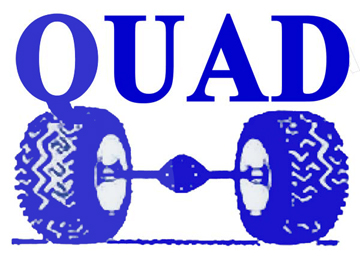|
|
|
Tech
Article Index |
|
Causes of
Catastrophic Manual Transmission Failures
By Dan
the Gear Man™, 4x4 Tech,
Inc. |
|
QUAD 4x4 is home to one of
Americas top 4x4 drivetrain specialists, our own
Dan the Gear Man™! Dan
has over 30 years experience in maintaining and repairing 4x4
drivetrains and chassis components. Dan is a frequent
contributor of tech articles for the
Turbo Diesel Register
and other national publications. He also wrote "Living
in Pleasant Valleys Life in Carbon County Montana", a 170
page book that was a local best seller with five printings. |
|
|
|
|
|
|
|
Catastrophic
manual transmission failures are an expensive headache you can
happily do without. Blowing your transmission apart while
towing a heavy trailer at 70 mph is dangerous and very, very
inconvenient. As you walk home or wait for the tow truck, you
can ponder the sad fact that most catastrophic failures are
easily preventable.
The worst
killer of manual transmissions we see on Dodge Turbo-Diesel
trucks is a small, often overlooked, $10 part that is not even
part of the transmission. The pilot bearing or bushing is
pressed into the flywheel. It’s function is to support the
forward end of the transmission input shaft, keep the clutch
disc centered on the flywheel, and allow the input shaft and
flywheel to rotate independently of each other when the clutch
is disengaged. Dodge used a thin bronze pilot bushing on
1989-1993 trucks and a small, needle type pilot bearing from
1994 on.
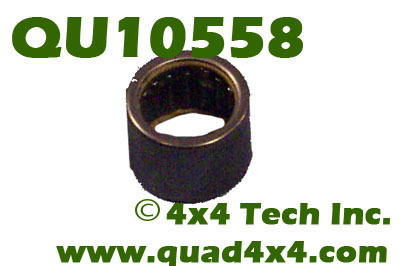
Stock Dodge Open Needle Bearing (Ford, GM and Jeep similar) |
When a pilot
bushing/bearing gets worn oversize or disintegrates, you may
experience erratic clutch performance and/or shifting problems
because the front of the transmission input shaft is essentially
free floating. With a failed pilot, your transmission input
shaft is no longer held in rigid alignment with the mainshaft
and counter shaft. The gear on the input shaft transmits full
engine power to the countershaft in all gears except direct (4th
on a 5speed, and 5th on a 6 speed) so any misalignment will
cause that power to be transferred from gear to gear with
inadequate tooth contact. Given time, metal fatigue will weaken
the gears until a catastrophic failure occurs.
|
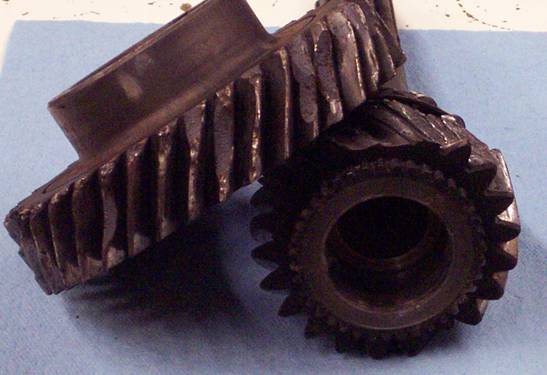
Broken input
gear and counter shaft driven gear from NV4500HD operated with failed pilot bearing.
|
Over the
years we have tried various types of metal bushings, Kevlar
bushings, needle bearings, and ball bearings in an effort to
find the “permanent fix”. None of the metal or Kevlar bushings
we tried consistently performed satisfactorily in Montana and
Wyoming due, I believe, to dust, dirt, and grit getting between
the bushing and shaft. The original, single seal pilot bearing
Dodge introduced for the 1994’s quickly lost it’s lubricant and
many failed within 50,000 miles. About 1998, Dodge started
using a wider bearing with a seal on either side. This bearing
appears to have at least twice the life of the original single
seal bearing, but it is still less than the life of most
clutches. We then tried boring the flywheels to accept standard
3/4” ID ball bearings. Much to our surprise, the thin inner
race of standard series ball bearings quickly broke apart.
Finally, when we were about ready to admit defeat, one of our
suppliers sent us some ball bearings with thicker races. These
special bearings (p/n QU51010) have performed flawlessly in
every truck we installed them in.
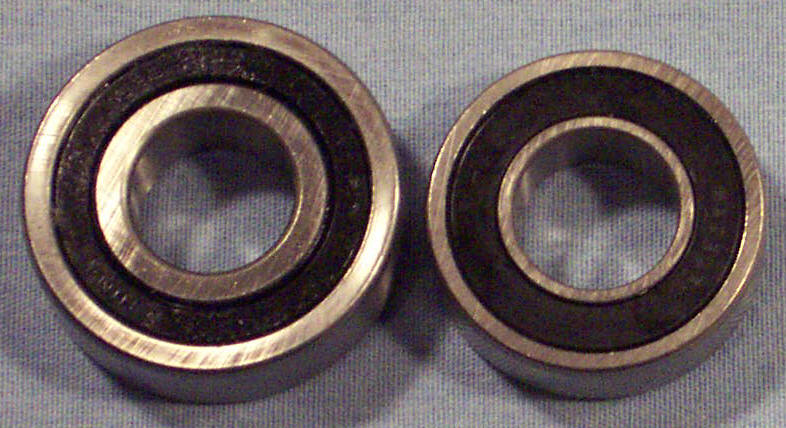
(L)QU51010
HD Ball Bearing (R) Standard ball bearing |
Lubrication
related failures are often so severe that the transmission must
be replaced with a new unit. Most lubrication related failures
are totally preventable. Common causes include using the wrong
oil, operating with insufficient lubricant, or going too long
between oil changes. If you have a first generation truck with
the Getrag G360, your transmission has inherent lubrication
problems that can be partially alleviated by both overfilling
the transmission with an extra quart of oil, and using only
synthetic lubricant of the viscosity recommended in your owners
manual.
Refilling the
transmission with the wrong lubricant is becoming more common all the time. Part of the problem is the plethora
of manual transmission lube choices. The G360, NV4500HD, and
NV5600 all use radically different lubricants. Fortunately,
using the wrong lubricant usually causes shifting problems
(particularly with the NV4500HD) long before total failure
occurs. Regular automatic transmission fluid may work great in
your buddy’s Ford Ranger 5 speed, but it will probably make your Dodge,
Ford fullsize, or GM truck transmission self destruct. |
|
Full Size Transmission Model |
Recommended Lubricant |
Approximate Capacity |
|
GM & Dodge NV4500 5 spd |
Castrol SyntorqLT 75w85w |
4 qts |
|
Dodge NV5600 6 spd |
Texaco STF or Pennzoil Synchromesh |
9.5 pts |
|
Dodge Getrag G360 spd |
5w30 (Synthetic preferred w/Diesel) |
6.8pts |
|
Ford ZF42 & ZF47 5spd |
Synthetic Mercon/Dexron III |
3.4-3.8 qts |
|
Ford ZF-650 6spd |
Synthetic Mercon/DexronIII |
6.4 qts w/cooler |
|
Ford Mazda M50D LD 5 spd |
Mercon/Dexron III |
7.6 pts |
|
GM ZF S6-650 6 spd |
GM Synthetic 12378515 |
|
|
Over the
years, we have worked on many transmissions that were run out of
oil when the transmission oil level wasn’t checked
periodically. The G360 and NV4500HD have a common problem with
leaking rear seals, while the NV5600 seems to have an affinity
for losing oil from the input seal. These types of leaks are
usually rather minor, but the fluid loss can become very
significant over time. A loss of a couple of quarts or more
will stop you about as quick as a landmine because no 5 or 6
speed manual transmission is very forgiving of high loads and
low oil levels.
|
|
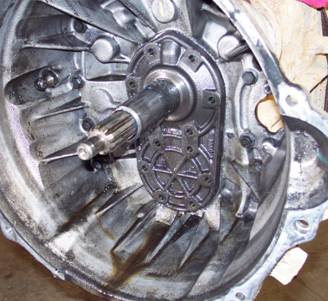
Oil
from leaking NV5600 input seal collected at bottom of
bellhousing |
|
Dodge 4x4 trucks
equipped with performance enhanced engines, NV4500HD
transmissions, and auxiliary two speeds, such as the Gear
Venders™ or U.S. Gear Dual Drive™ units, may have problems with
the aluminum transmission tailshaft housing cracking. The
cracks may or may not cause oil leaks, but if they do, oil loss
and subsequent bearing seizure is a certainty if not caught
quickly. We recommend installing an optional, cast iron
tailshaft housing on the NV4500HD whenever an auxiliary
transmission is installed in a 4x4 truck.
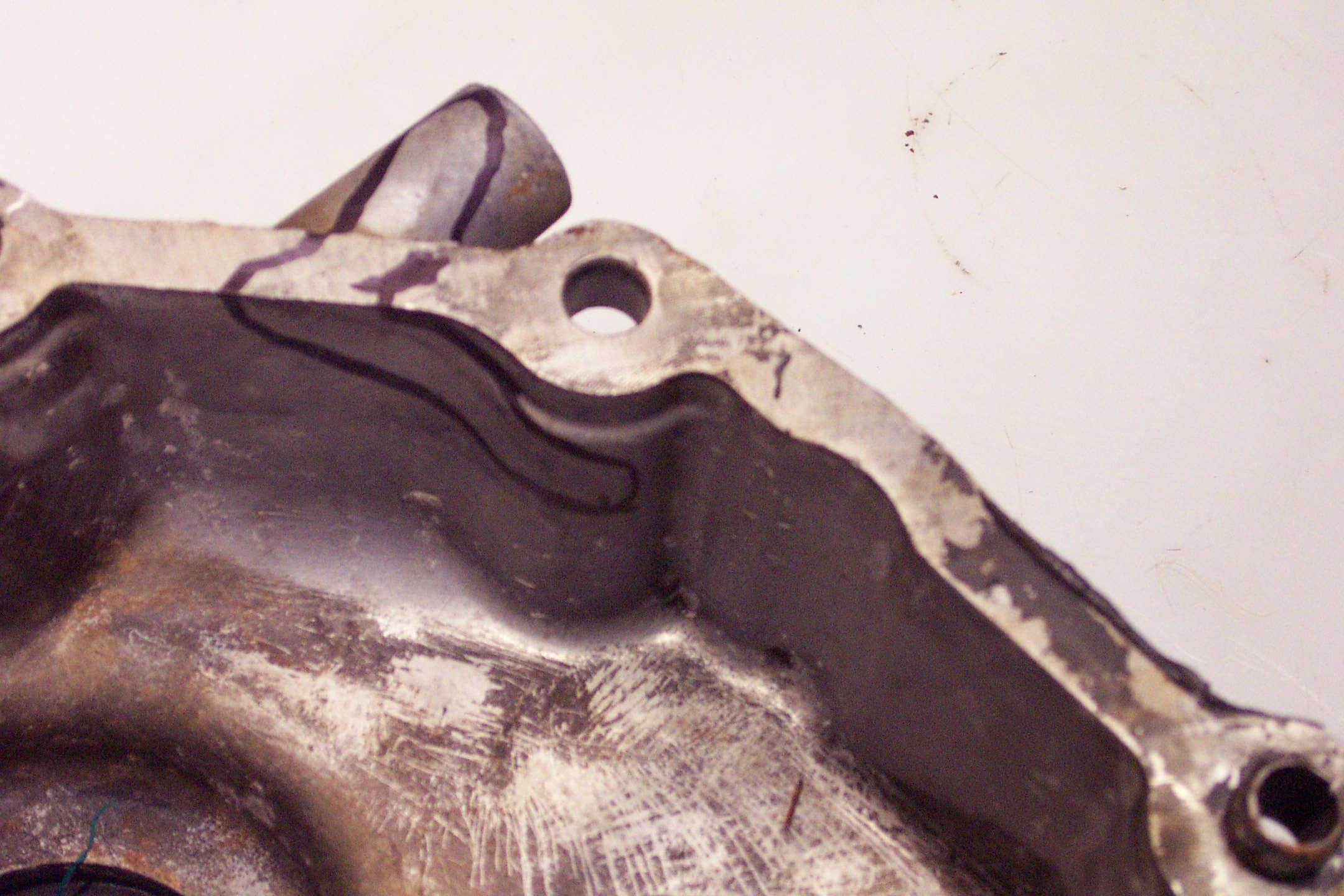
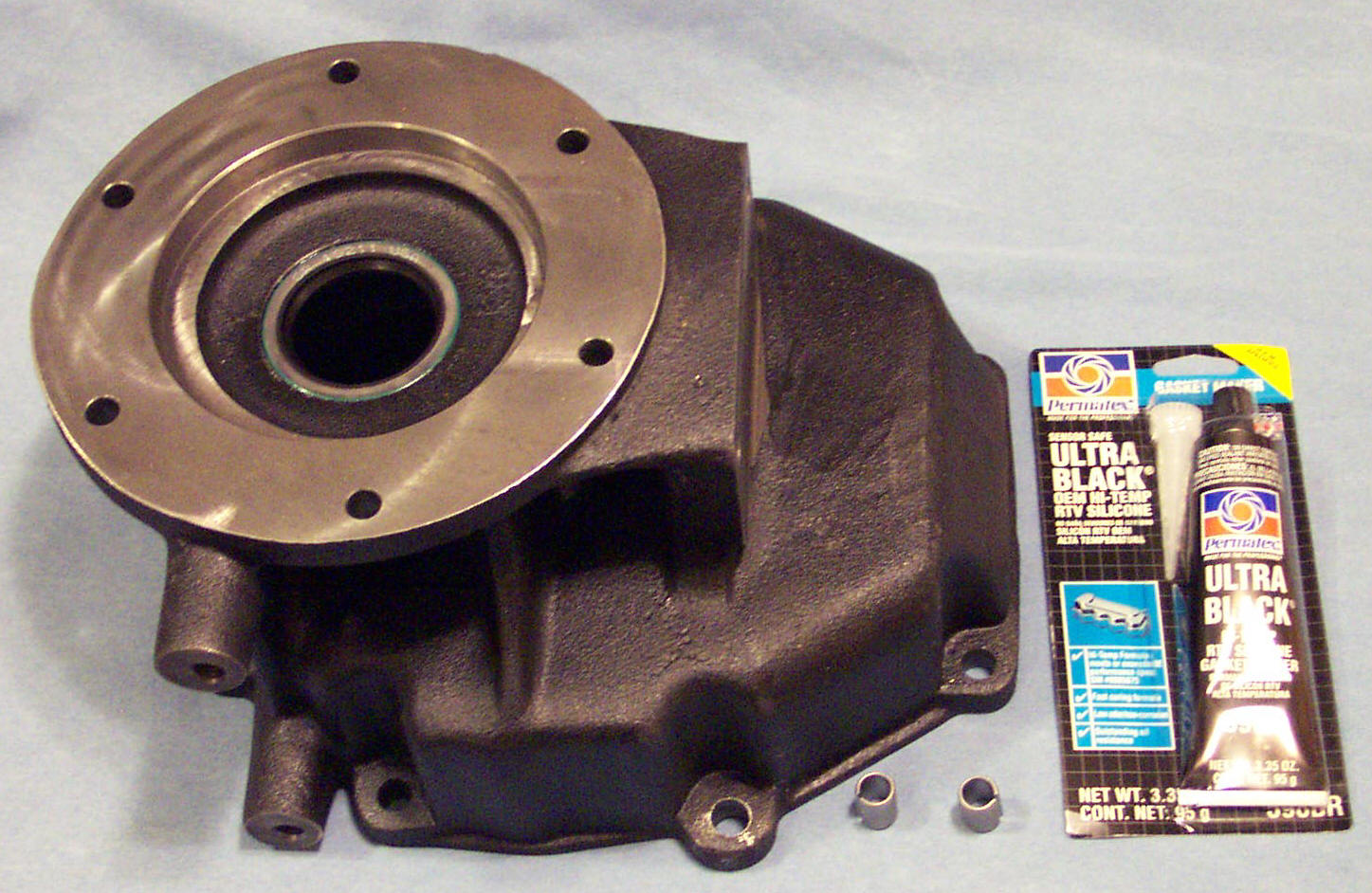
Mark
Highlights Cracked NV4500 Tailhousing
QK1039
Cast Iron Tailshaft Housing Kit
One of the
laws of vehicle preventative maintenance states “changing oil is
cheaper than changing iron”. Over the years, I have found few
Dodge owners violate that rule with their Cummins engine, but
many never apply it to the transmission. How often should you
change the transmission oil? For most years, Dodge does not
even have a recommended manual transmission oil change
interval. However, back in 1993, Dodge did recommend changing
the Syntorq LT™ transmission oil in NV4500 equipped trucks at
18,000 miles for severe service and 36,000 miles for normal
service. Those intervals are what we recommend for all manual
transmissions bolted behind a Cummins engine. If you use a
manual transmission filter kit like our QK1000, which has
powerful magnets combined with a simple, but astonishingly
effective filter to cleanse the oil of both magnetic and
non-magnetic particles, the oil change interval can be extended
by 6,000 miles for severe duty, or 12,000 miles for normal
service. Filtering the oil is especially important on NV5600
transmissions to remove bronze particles worn from the synchro
rings.
|
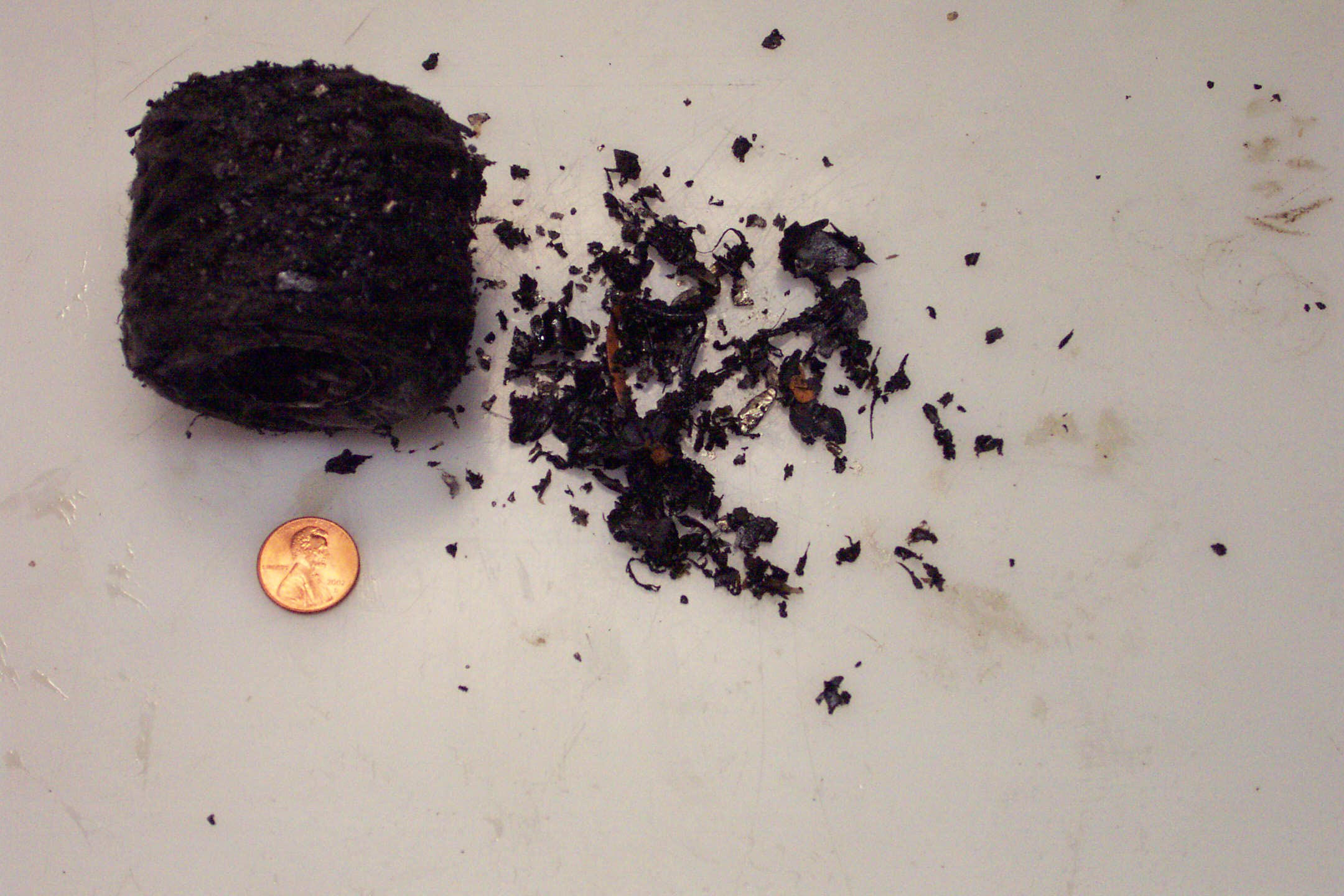
Debris caught by
QK1000 manual transmission
oil filter on NV4500HD. Transmission was run with low oil after
stock tailshaft housing shown above cracked from extra weight of
auxiliary transmission. |
|
The second
most embarrassing way to wreck a transmission is by towing your
truck with another vehicle (the MOST embarrassing way is to
drain your tranny oil and then forget to refill it!). We have
seen some spectacular examples of seized 4x4 transmissions that
came out of towed trucks. The problem seems to be oil
starvation because the mainshaft bearings do not get adequate
lubrication when the counter shaft is not flinging oil
throughout the transmission. The Getrag G360 seems to be
particularly susceptible to damage of this type. The 1993
Dodge Full Size Truck service manual allows short distance (15 mile), low speed (30
mph max.) vehicle towing if the transmission is in neutral.
1994 and newer Dodge service manuals recommend 4x4 vehicles only
be towed if all the wheels can be lifted off the ground using
tow dollies.
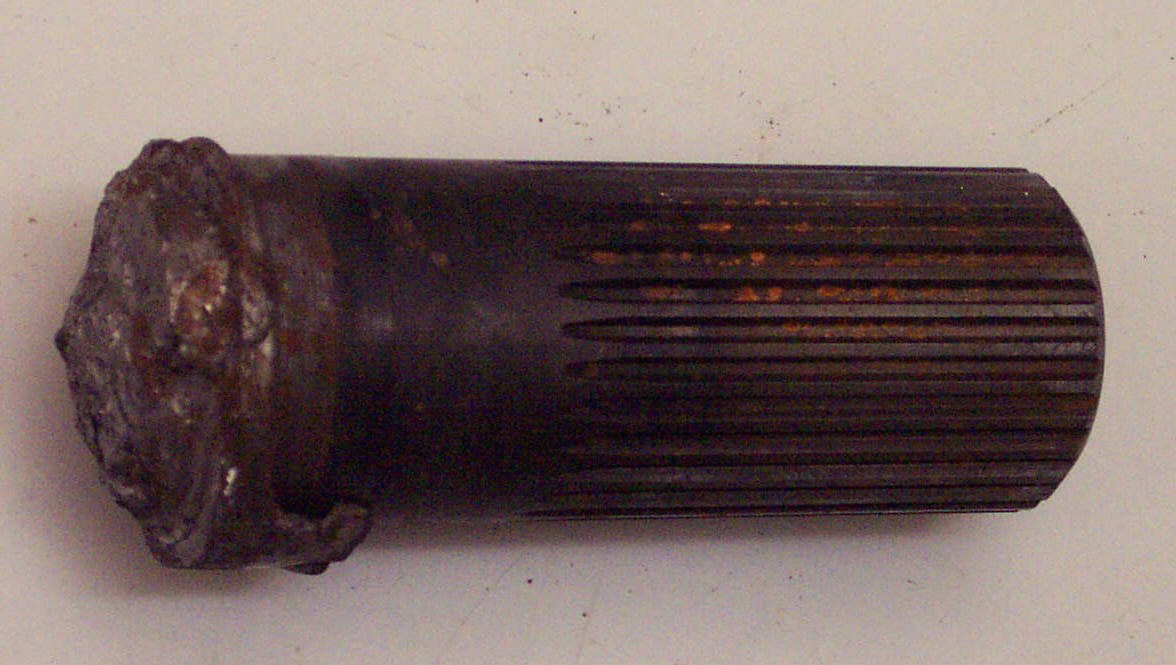
Twisted off
mainshaft splines from G360 that was flat towed 45 miles with
transfer case in gear and transmission in neutral. |
There are of
course, other, even less common causes of catastrophic
transmission failures. The infamous NV4500 fifth gear problem
for instance, almost never causes a total failure the first time
the gear backs the mainshaft nut off. However, the temporary
fix of putting on a new nut and 5th gear (instead of replacing
the mainshaft) often does lead to a major failure of either the
transmission or transfer case. As a rule, the old 5th gear wore
into the shaft. Once the shaft is worn, it will be impossible
to keep the gear tight and concentric on the shaft. Since the
gear is loose, it can’t keep the rear mainshaft bearing tight
against the reverse gear thrust washer. The bearing wears into
the shaft and/or thrust washer which increases mainshaft
endplay. When this happens, the transfer case input ball
bearing is also supporting the transmission mainshaft which it
can’t do for long without failing itself. At that point,
anything can happen and it won’t be cheap to fix. If you are
not very lucky, your wobbling fifth gear is going to break the
fifth gear fork, pieces of which will get ground between the
gears, which in turn will stop your transmission in a heart
beat.
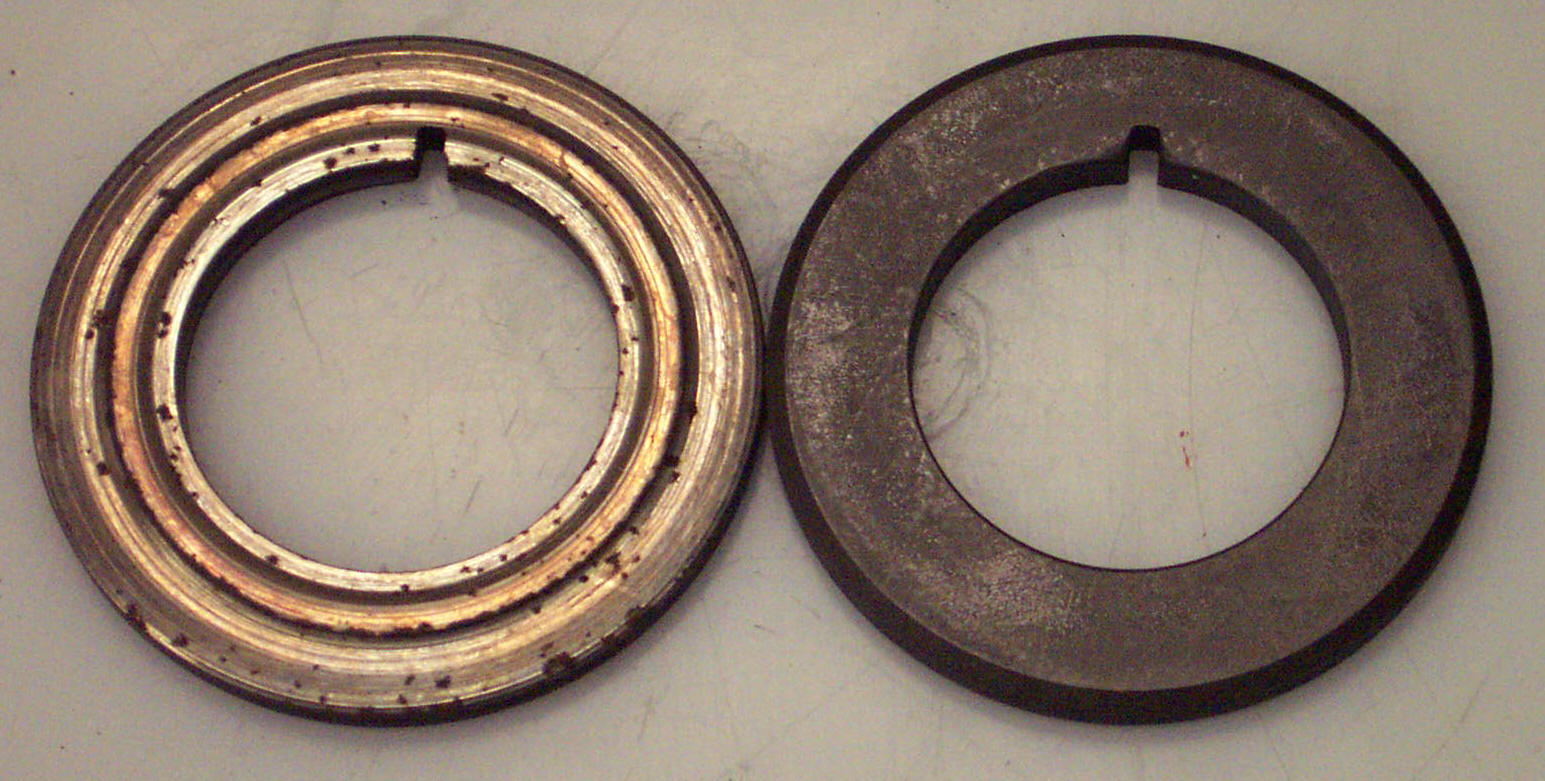
Severely
worn NV4500HD reverse gear thrust washer on left compared to new
washer on right. Damage was caused when rear mainshaft bearing
was not held in place by fifth gear. |
Since
they are mechanical devices, manual transmissions do
occasionally have a catastrophic failure that is caused by a
single defective factory part. Back in 1997, we had a brand new
NV4500HD main case break after 200 miles from a casting flaw.
However, such failures of original equipment parts are quite
rare. The record on aftermarket parts for the NV4500 is not
quite so good since there is a profusion of aftermarket parts
available. Some are quite good and some are not. Still, most
problems associated with certain aftermarket parts do not lead
to true catastrophic failure unless ignored.
By practicing good preventative maintenance and paying close
attention to subtle changes in the way your truck drives, you
will probably never have first hand experience of a catastrophic
transmission failure because you will detect the problem before
it gets worse. If, however, you drive with the pedal to the
metal, oblivious to everything except the road ahead and the
tunes blasting from your stereo, you might want to keep the
phone number of your favorite transmission repair shop close at
hand.
|
|
